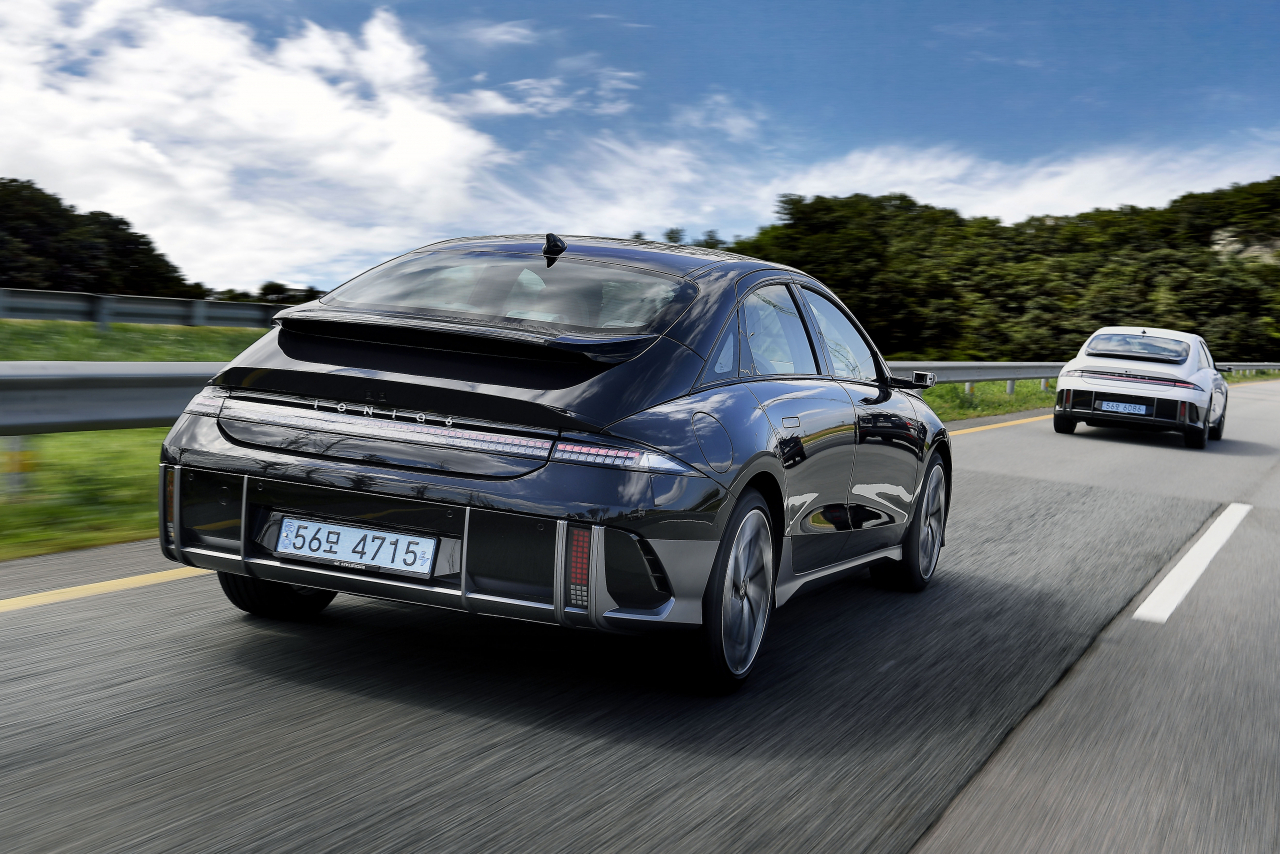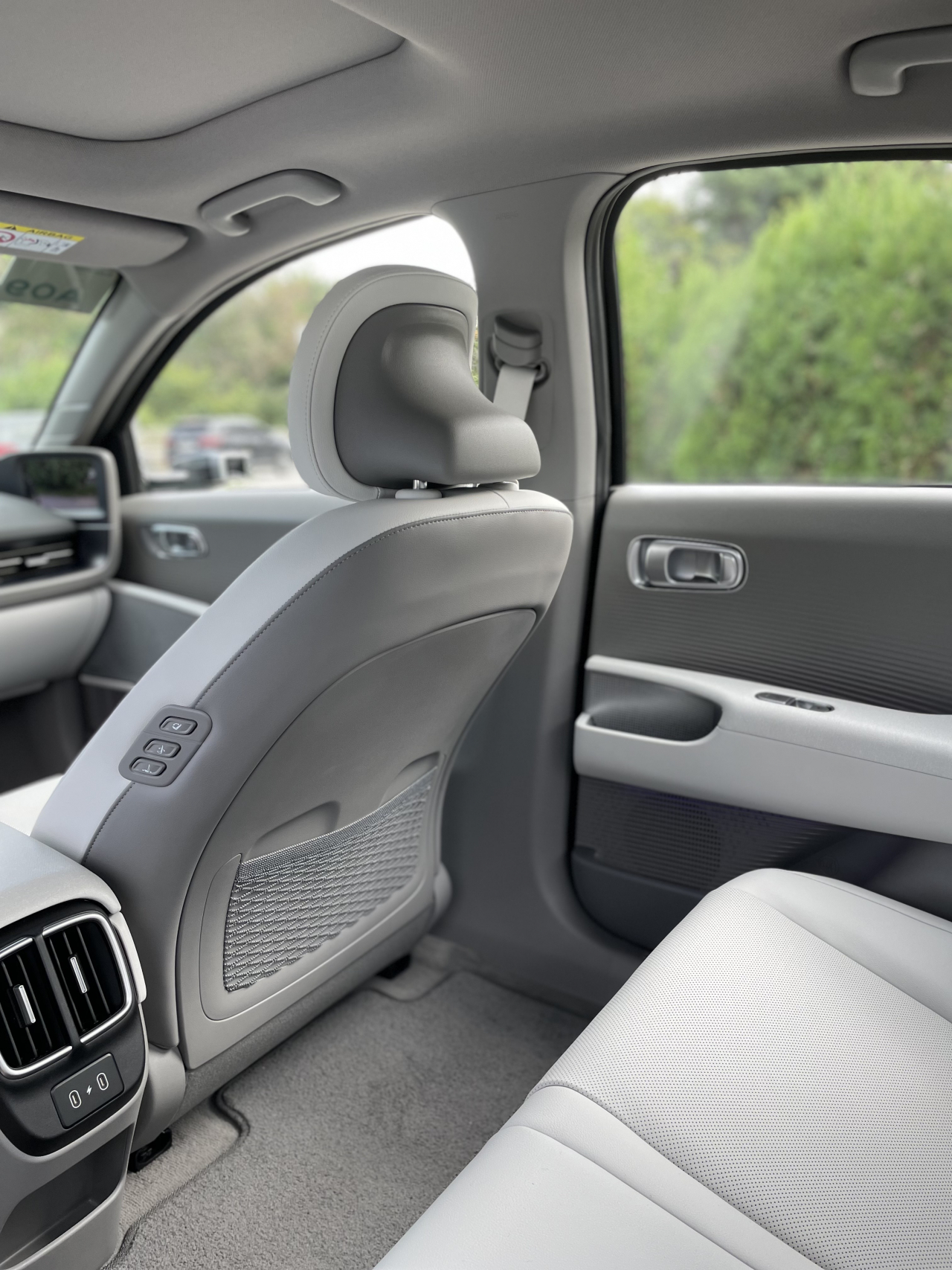Market Now
[Behind the Wheel] Ioniq 6 could be a game changer in Hyundai’s EV portfolio
 |
Rear of the Ioniq 6 (Hyundai Motor Group) |
At first glance, Hyundai Motor’s second flagship electric vehicle Ioniq 6 looks more like a sports car similar to Porsche’s 911 Carrera, mainly for its coupe-like frame. But inside, the spacious interior gives the feeling of a SUV, thanks to its unique platform built on E-GMP. The carmaker's adoption of EV-only seat material that is 30 percent thinner than ordinary seat fabric was a good choice.
This unlikely combination of exterior and interior clearly shows where Hyundai Motor wants to head to in terms of future mobility. It wants to challenge the current market, which is saturated with similar designs, while not forgetting about personalized practicality for users.
While it shares the name Ioniq with its predecessor, the Ioniq 6 has more future mobility elements, whereas the Ioniq 5 was centered on reinterpreting Hyundai Motor’s design heritage from Pony.
During a 115-kilometer test drive in Gyeonggi Province, the reporter was worried if the car would well respond to sudden acceleration or braking, as most EVs exert maximum torque with the electric motor running, giving a feeling of nausea compared to combustion engine cars when accelerating. EVs’ regenerative braking is also often mentioned as the reason for a less comfortable driving experience.
Despite concerns, the Ioniq 6 quickly but gently sped up to 100 kilometers per hour with a soft tap on the accelerator. It sped up from 0-96 kph in 5.1 seconds, similar to Tesla’s Model Y long-range model (4.4 seconds).
When accelerating, the electric motor was hardly audible. Hyundai Motor explained that the Ioinq 6 was the first model with aerodynamic efficiency and a low drag coefficient of just 0.21.
Another surprise was the Ioniq 6’s traveling distance.
Traveling distance is a headache among EV drivers, who always have to look for the nearest EV charging station due to a lack of related infrastructure.
But the Ioniq 6 offers a maximum of 524 kilometers per single charge for the long-range two-wheel drive (2WD) model, the longest-range model among Hyundai Motor’s EV products.
But what was most satisfactory about Ioniq 6 was the "hachagam."
Hachagam is a play on the word “seungchagam,” which refers to the level of comfort you feel in a vehicle while driving. By changing up the first syllable, hachagam refers to the feeling when you step out of the vehicle, preferably to be met by envious looks.
When the reporter stepped out of the car at a parking lot next to a cafe in Paldang, people gathered around the car commenting that they'd never seen this model in real life.
Hyundai’s new design concept “electrified streamliner" was an eye-catcher on the road, consisting of an elliptical wing-inspired spoiler with a winglet.
The interior also had various pleasant surprises, such as the relocation of the gearshift to behind the steering wheel’s right side. All buttons on the driver’s left door arm rest area were also moved to the center console for intuitive, practical control of the car.
 |
The back seat of the Ioniq 6 (Kim Da-sol/The Korea Herald) |
According to Hyundai Motor, it received some 47,000 Ioniq 6 orders for a three-week preorder period. On the first day of presales, a total of 37,446 preorders for its Ioniq 6, the highest day one preorder sales figure in the company’s history.
The first delivery began from last week, taking less than a month compared to other models take from at least three months to 18 months for delivery after an order.
The price starts at 52 million won ($38,760) for a standard exclusive long-range model and goes up to 61.3 million won for the highest prestige type, after deducting government EV tax credit subsidies.
By Kim Da-sol (ddd@heraldcorp.com)







![[Contribution] Preparing for future with strategic public procurement](http://res.heraldm.com/phpwas/restmb_idxmake.php?idx=151&simg=/content/image/2024/11/29/20241129050037_0.jpg)
